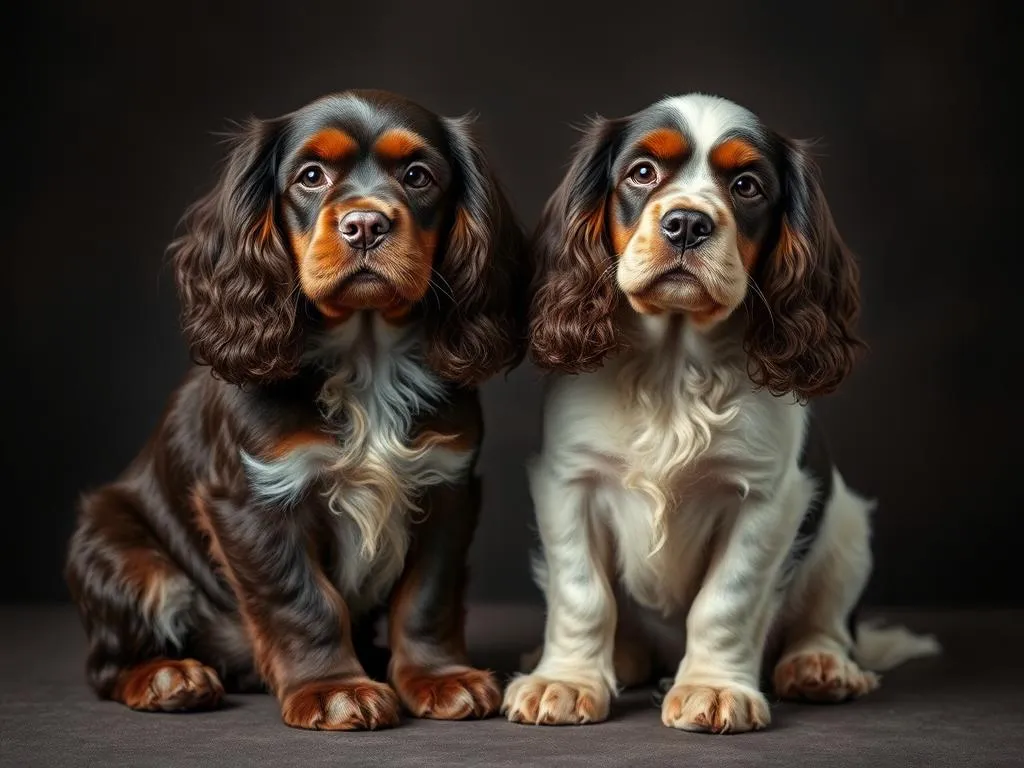
Understanding dog breeds is essential for potential pet owners, breeders, and enthusiasts alike. Each breed has its unique history, purpose, and characteristics that shape its behavior and compatibility with different lifestyles. One breed that stands out for its affectionate nature and rich background is the Cocker Spaniel. Cocker Spaniels were bred for specific functions that highlight their versatility and charm. In this exploration, we will delve into the origins, historical roles, and contemporary traits of Cocker Spaniels, as well as what they were originally bred for.
Understanding Dog Breeds
What are Dog Breeds?
Dog breeds are groups of domestic dogs that have been selectively bred for specific traits or functions. This breeding has resulted in distinct physical and behavioral characteristics that differentiate one breed from another. Historically, dog breeding dates back thousands of years, with various breeds emerging to fulfill specific roles such as hunting, herding, guarding, and companionship.
The Purpose of Dog Breeding
The primary aim of dog breeding is to enhance particular functional characteristics. For instance, some breeds are developed for working roles, while others are specifically bred for companionship. Selective breeding plays a crucial role in developing traits that suit a breed’s intended purpose, ensuring that dogs can perform tasks effectively while also meeting the needs of their human companions.
Cocker Spaniels: A Historical Perspective
Origins of the Cocker Spaniel
The Cocker Spaniel’s history can be traced back to Spain, where spaniels were originally bred as hunting dogs. The name “Cocker” is derived from their ability to flush woodcocks, a type of game bird. Early records indicate that spaniels were utilized in hunting from as far back as the 14th century, showcasing their significance in the field.
Development of the Breed
The Cocker Spaniel evolved into two distinct breeds: the American Cocker Spaniel and the English Cocker Spaniel. The split occurred during the 20th century, largely due to differing breeding practices in the United States and the UK. American breeders focused on developing a smaller, more refined dog with a distinctive appearance, while English breeders maintained a larger, sturdier version with a strong hunting background. This divergence illustrates how Cocker Spaniels were bred for different purposes in their respective regions.
What Were Cocker Spaniels Bred For?
Hunting and Sporting Background
Initially, Cocker Spaniels were bred for hunting small game, particularly birds. Their keen sense of smell, agility, and ability to flush game from dense cover made them exceptional hunting partners. As flushing spaniels, they were trained to locate and retrieve birds, bringing them back to their handlers. This skill set not only highlights their usefulness in hunting but also showcases their intelligence and eagerness to work.
Companion Animals
As time progressed, the role of Cocker Spaniels began to shift from hunting to family pets. Their friendly disposition, playful nature, and affectionate temperament made them ideal companions for families. They quickly became popular as household pets, known for their loyalty and ability to bond with children and adults alike. This transition into companion animals underscores the breed’s adaptability and social nature, which are still celebrated today.
Current Roles and Versatility
In modern society, Cocker Spaniels have found various roles beyond hunting and companionship. They are increasingly being trained as therapy and service dogs, providing emotional support and assistance to those in need. Additionally, Cocker Spaniels are popular participants in dog shows and competitions, showcasing their beauty and agility. This versatility reflects not only their historical significance but also their ongoing appeal.
Characteristics of Cocker Spaniels
Physical Traits
Cocker Spaniels are known for their distinctive appearance. They typically stand between 13.5 to 15.5 inches tall and weigh between 20 to 30 pounds. Their long, flowing ears and expressive eyes contribute to their charming look. The breed comes in various coat types and colors, including solid, parti-color, and merle. Regular grooming is essential to maintain their luxurious coats and keep them looking their best.
Temperament and Behavior
Cocker Spaniels are renowned for their friendly and eager-to-please personalities. They are affectionate dogs that thrive on human interaction, making them excellent family pets. However, their friendly nature does not diminish their need for proper training and socialization. Early socialization with people and other dogs is crucial to ensure they develop into well-adjusted adults.
Caring for Cocker Spaniels
Training and Socialization
Training is an essential component of raising a Cocker Spaniel. Early training should focus on basic commands and obedience to establish a strong foundation. Positive reinforcement methods work well with this breed, as they respond best to kindness and encouragement. Additionally, consistent socialization is vital to help Cocker Spaniels become comfortable in various environments and with different people and animals.
Health Considerations
Like all breeds, Cocker Spaniels are prone to specific health issues. Common concerns include ear infections, eye problems, and hip dysplasia. Regular veterinary check-ups are essential to monitor their health and address any potential issues early. Preventive care, including vaccinations and dental check-ups, plays a critical role in ensuring a long and healthy life for your Cocker Spaniel.
Grooming Needs
Cocker Spaniels require regular grooming to maintain their beautiful coats. Brushing should be done at least once a week to prevent matting and reduce shedding. Bathing should be performed as needed, typically every 4 to 6 weeks, depending on their activity level and coat condition. Special attention should be given to their ears, as Cocker Spaniels are prone to ear infections due to their long ears trapping moisture and debris.
Conclusion
Understanding what Cocker Spaniels were bred for provides valuable insight into their characteristics and needs as pets. From their origins as hunting companions to their roles as beloved family pets and service dogs, Cocker Spaniels exhibit a remarkable versatility that endears them to many. Potential owners should consider these aspects before bringing a Cocker Spaniel into their lives, ensuring a harmonious relationship built on understanding and care.
FAQs
Are Cocker Spaniels good with children?
Yes, Cocker Spaniels are typically very good with children. Their friendly and affectionate nature makes them excellent family pets, as they enjoy playing and interacting with kids.
How much exercise do Cocker Spaniels need?
Cocker Spaniels require regular exercise to maintain their health and happiness. Daily walks, playtime, and mental stimulation are essential to keep them active and engaged.
What is the average lifespan of a Cocker Spaniel?
The average lifespan of a Cocker Spaniel is around 12 to 15 years, although with proper care, some may live longer.
Do Cocker Spaniels shed a lot?
Cocker Spaniels are moderate shedders. Regular grooming helps reduce shedding, and their coat care routine is essential to keep it manageable.
What is the cost of adopting a Cocker Spaniel?
The cost of adopting a Cocker Spaniel can vary widely based on location, shelter, and the dog’s age. Adoption fees typically range from $100 to $300, which often includes vaccinations and spaying/neutering.









